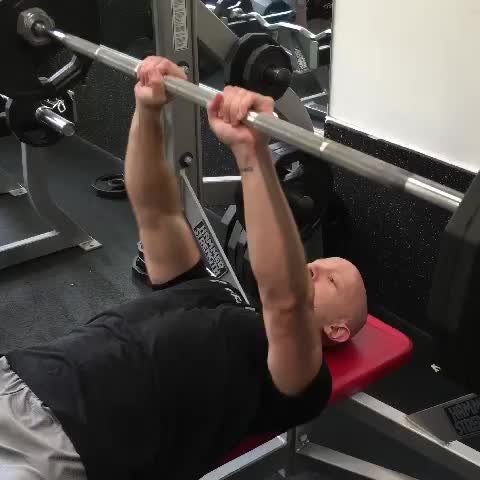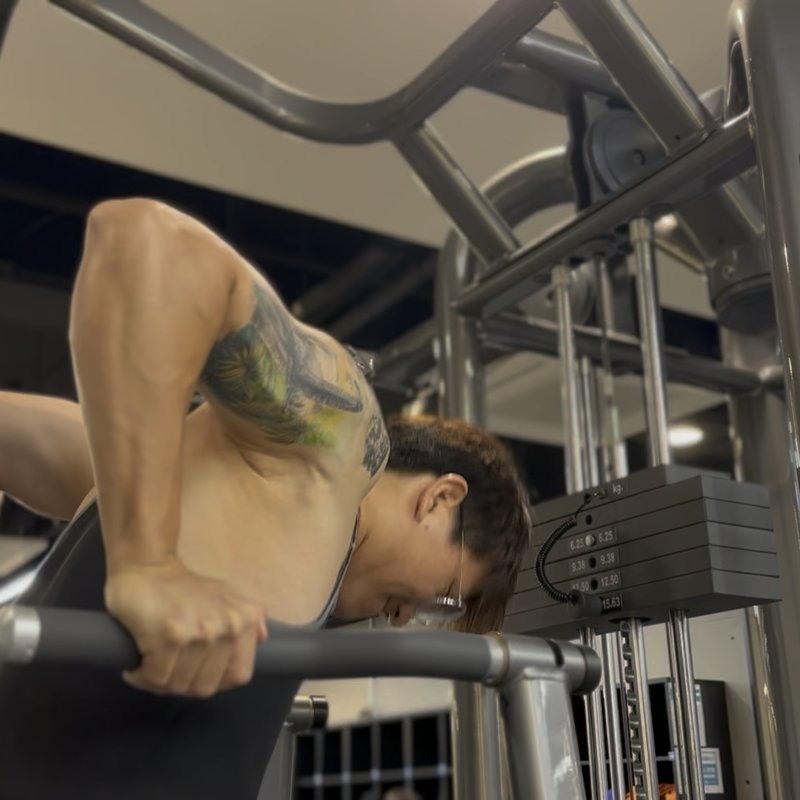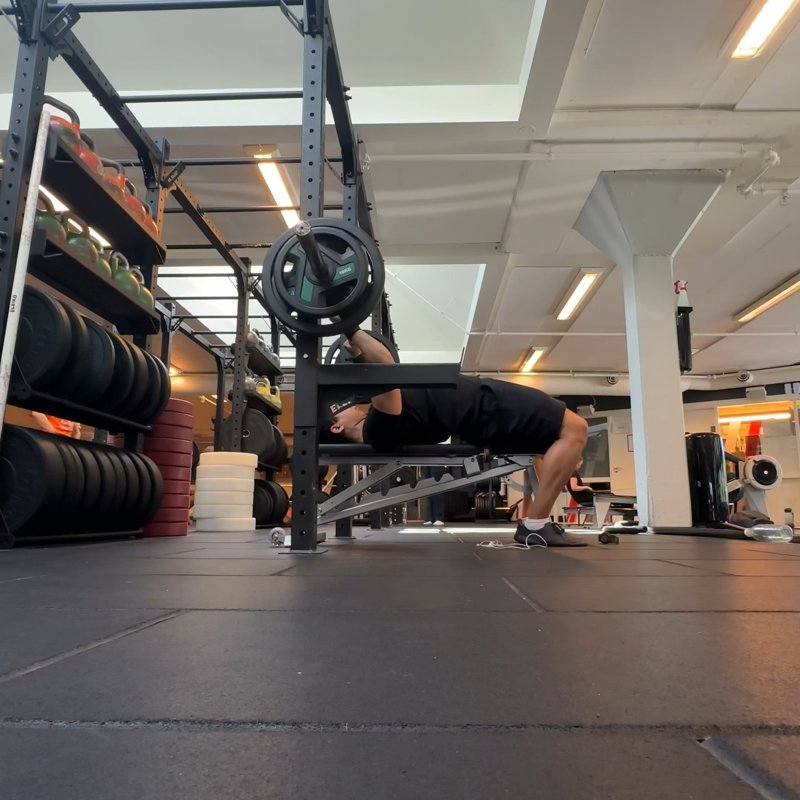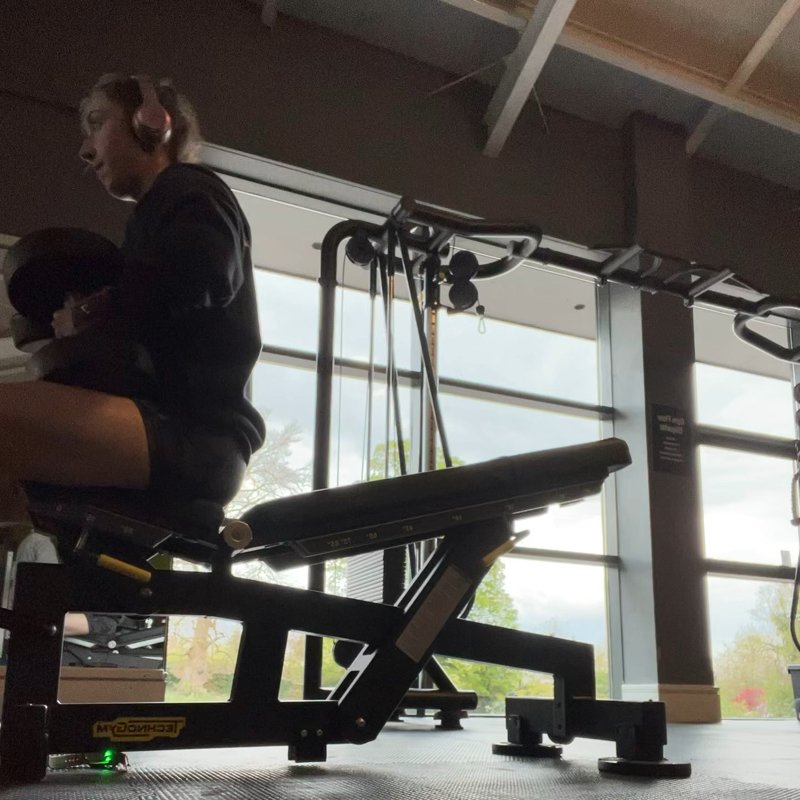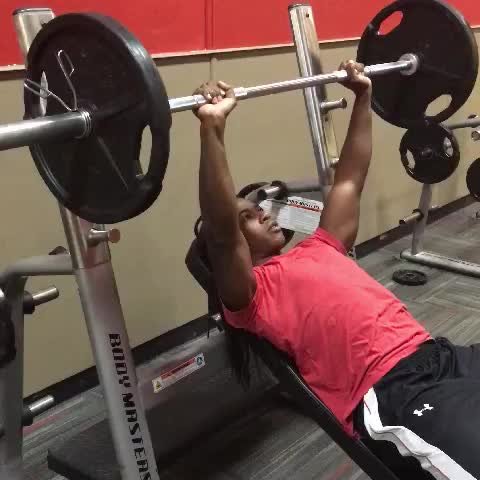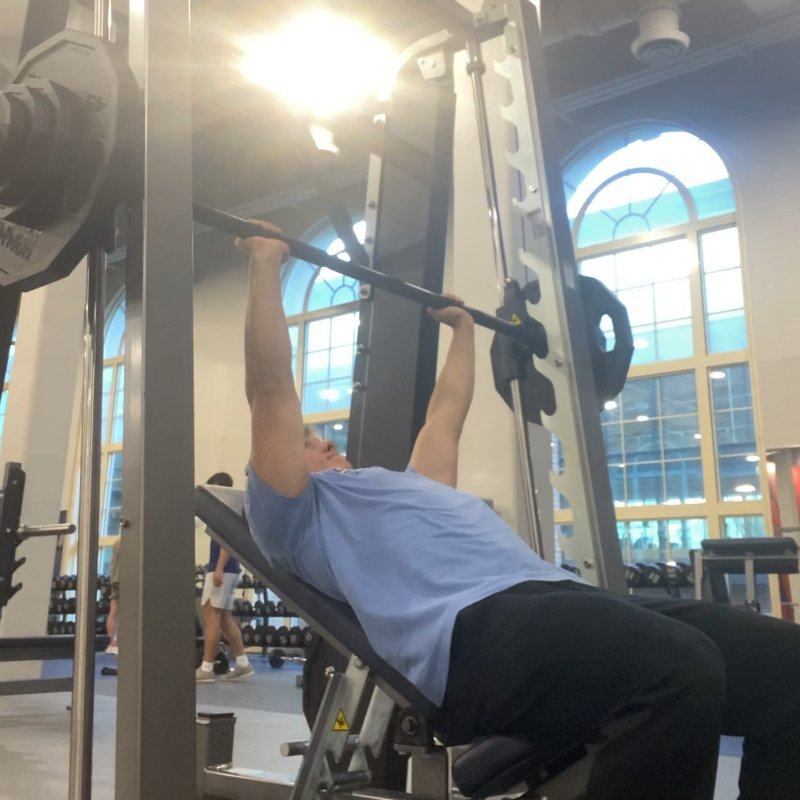Weighted Dip: The Ultimate Guide
The Weighted Dip is an advanced progression of the standard dip that adds external resistance to increase intensity, powerfully targeting the chest, triceps, and shoulders for significant upper body strength and mass development.
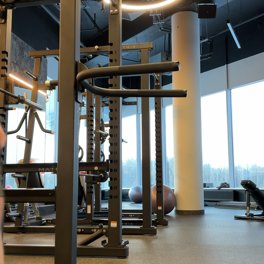
Quick Facts
Key Benefit
Accelerated upper body strength and muscle development
Primary Muscles
Anterior Deltoids, Pectoralis Major, Triceps
Secondary Muscles
Abdominals, Pectoralis Minor, Rhomboids
Equipment
bodyweight, machine (optional)
Difficulty
Advanced
Type
Strength
In This Guide
Ready to master the Weighted Dip?
Track your progress, see improvements over time, and build strength consistently.
Download GravitusThe Weighted Dip is a high-return exercise that takes the already effective bodyweight dip and elevates it to a new level of intensity through added resistance. By adding external weight via a dip belt, weighted vest, or held dumbbell, this movement becomes one of the most productive exercises for developing upper body pushing strength and muscle mass. Often referred to as the "upper body squat," the weighted dip is a compound movement that powerfully engages the triceps, chest, and shoulders simultaneously. This comprehensive muscle recruitment makes it exceptionally efficient for building functional strength and size in a single exercise. What distinguishes the weighted dip from many machine or isolation exercises is its closed kinetic chain nature—your hands are fixed while your body moves through space. This creates unique neuromuscular demands and typically allows for heavier loading than many isolation movements targeting the same muscle groups. For those who have mastered the standard bodyweight dip, adding progressive resistance is the natural evolution to continue strength and muscle development. The weighted dip serves as an excellent bridge between bodyweight calisthenics and traditional weighted strength training, combining the benefits of both approaches. Whether your goal is to build impressive triceps, develop a powerful chest, increase overall upper body strength, or improve performance in other pressing movements, the weighted dip deserves a prominent place in your training program.
Benefits of Weighted Dips
The weighted dip offers several distinct advantages over many other upper body exercises.
Compound Muscle Activation
Simultaneously engages multiple major muscle groups (triceps, chest, shoulders) for efficient, comprehensive upper body development.
Progressive Overload Potential
Allows for continual strength progression beyond what bodyweight alone can provide, enabling long-term development without plateaus.
Functional Strength Carryover
Develops pushing power that transfers directly to other exercises and real-world activities requiring upper body strength.
Joint Friendly for Many
The natural movement pattern can be more comfortable for shoulders than some pressing variations when performed with proper form.
Time Efficiency
Delivers substantial stimulus to multiple muscle groups simultaneously, reducing the need for numerous isolation exercises.
Proper Form & Technique
Setup
- Select your resistance method—typically a dip belt with weight plates, a weighted vest, or a dumbbell held between the feet.
- For a dip belt (the most common method), secure it around your waist and attach the desired weight through the chain.
- Position yourself at parallel dip bars with hands approximately shoulder-width apart.
- Grip the bars firmly with palms facing inward (neutral grip).
- Support your body weight by straightening your arms while keeping shoulders down and away from your ears.
- For chest emphasis, lean your torso slightly forward (about 15-30 degrees) with elbows flared somewhat outward.
- For triceps emphasis, keep your torso more upright with elbows closer to your sides.
- Maintain a slight hollow body position with core engaged and legs either straight or slightly bent with ankles crossed.
Movement
- Begin by inhaling and bending your elbows to lower your body with control.
- Keep your shoulders down and engaged throughout the movement (avoid shrugging).
- Lower until your upper arms are approximately parallel to the ground, or slightly below if mobility allows.
- Maintain tension in your core and avoid excessive swinging or kipping motions.
- At the bottom position, your elbows should form roughly 90-degree angles.
- Pause briefly at the bottom to maintain control and minimize momentum.
- Exhale as you push through your palms to drive your body back up to the starting position.
- Continue pushing until your arms are nearly straight without fully locking out the elbows.
- Repeat for the desired number of repetitions, maintaining proper form throughout.
Key Form Tips
Weight Management
Start with modest added weight (5-10% of bodyweight) and progress gradually as strength increases.
Shoulder Position
Keep shoulders down and back throughout the movement to protect the shoulder joints and properly engage the target muscles.
Depth Control
Lower to a depth that feels comfortable for your shoulders—typically until upper arms are parallel to the floor or slightly below.
Body Stability
Maintain core engagement to prevent excessive swinging or arching, especially important with added weight.
Wrist Alignment
Keep wrists neutral (not excessively flexed or extended) to avoid unnecessary strain with the increased load.
Muscles Worked
Primary Muscles
- triceps: The three-headed muscle on the back of the upper arm is the primary mover, particularly during the lockout portion of the movement.
- pectoralis major: The large chest muscle contributes significantly to the movement, especially with a forward lean and wider elbow position.
- anterior deltoids: The front portion of the shoulder muscles assists in the pushing motion and stabilizes the shoulder joint.
Secondary Muscles
- pectoralis minor: This smaller chest muscle beneath the pectoralis major assists with scapular movement during the exercise and with protraction during the upward phase.
- rhomboids: These upper back muscles between the shoulder blades work to stabilize the scapula throughout the movement.
- abdominals: The abdominals, obliques, and lower back work isometrically to stabilize the body, becoming more important with added weight.
Common Mistakes and How to Fix Them
Starting With Too Much Weight
Adding excessive weight before mastering bodyweight dips increases injury risk. Ensure you can perform at least 8-10 clean bodyweight dips before adding external resistance. Start with modest weight (5-10 pounds) and progress gradually as your strength increases.
Insufficient Range of Motion
Not lowering deep enough reduces muscle activation and benefits. Lower until your upper arms are at least parallel to the floor, or slightly below if comfortable for your shoulders. Avoid cutting the range short just to handle heavier weight.
Excessive Body Swing
Swinging or kicking to generate momentum reduces muscle engagement and increases injury risk with added weight. Control the movement throughout, pause briefly at the bottom, and focus on muscular effort rather than momentum. Engage your core to stabilize your body position.
Shrugging the Shoulders
Allowing shoulders to rise toward ears places excessive stress on the shoulder joints, particularly dangerous with added resistance. Keep shoulders actively depressed throughout the movement by thinking of "pushing them down" away from your ears.
Overarching the Lower Back
Excessive lumbar extension can place undue stress on the spine, especially with added weight. Maintain a neutral spine position by engaging your core and slightly tucking your pelvis to create a strong, stable position throughout the movement.
Weighted Dip Variations
Resistance Variations
-

Dip Belt Weighted Dip
The standard method using a specialized belt around the waist with weight plates attached by a chain, allowing for substantial loading.
-
Weighted Vest Dip
Using a vest with adjustable weight distributed across the upper body, providing a more balanced weight distribution.
-

Dumbbell or Kettlebell Dip
Holding a weight between the feet or knees, suitable for lighter weights or when specialized equipment is unavailable.
-

Chain-Weighted Dip
Draping heavy chains over the shoulders or around the neck for added resistance that increases at the top position.
Technical Variations
-

Chest-Focused Weighted Dip
Performed with a forward torso lean and wider elbow flare to emphasize chest engagement over triceps.
-

Triceps-Focused Weighted Dip
Keeping the torso more upright and elbows close to the body to maximize triceps activation.
-
Weighted Ring Dip
Performing weighted dips on gymnastic rings instead of parallel bars, creating greater instability and increased stabilizer demands.
-
Tempo Weighted Dip
Manipulating the speed of different phases (e.g., 3-second lowering, 1-second pause, explosive up) to increase time under tension.
Frequently Asked Questions
The appropriate weight to add to dips varies significantly based on your strength level, bodyweight, and training experience. As a general guideline, beginners to weighted dips should start with just 5-10 pounds (about 5% of bodyweight) to adapt to the new stimulus while maintaining proper form. Intermediate lifters might work with 25-45 pounds (roughly 15-25% of bodyweight), while advanced trainees might use 45-100+ pounds (25-50%+ of bodyweight). Rather than targeting specific numbers, focus on progressive overload - begin conservatively and increase weight gradually (2.5-5 pounds) only after you can complete your target repetitions with excellent technique. Many experienced lifters consider being able to perform dips with 50% of bodyweight added for 5+ reps a significant strength benchmark.
Weighted dips are not inherently harmful for the shoulders when performed with proper form and appropriate progression. However, they do place significant demands on shoulder stability and mobility. The added resistance amplifies both the benefits and potential risks of the exercise. Individuals with existing shoulder issues, limited mobility, or previous injuries should approach weighted dips with caution, potentially avoiding them until sufficient shoulder health is established. Key technique points for shoulder safety include maintaining depression of the shoulder blades (avoiding shrugging), controlling the depth to a range that feels comfortable for your individual shoulder structure, and progressing weight gradually. If you experience shoulder pain during weighted dips that persists beyond normal muscle fatigue, consider consulting with a fitness professional or physical therapist.
Weighted dips effectively train both the chest and triceps, with emphasis shifting based on your body position. For greater chest emphasis, lean your torso forward approximately 15-30 degrees and allow your elbows to flare slightly outward during the movement. For triceps emphasis, keep your torso more upright and your elbows closer to your sides throughout the motion. The beauty of the weighted dip is its versatility - you can adjust your technique based on which muscle group you want to prioritize in a particular training session. For balanced development, consider incorporating both variations into your training program, either within the same workout (if volume permits) or alternating between chest-focused and triceps-focused dips in different training sessions.
For most trainees, performing weighted dips 1-3 times per week provides sufficient stimulus for progress while allowing adequate recovery. If you're following a body-part split, you might include weighted dips on chest day, triceps/arm day, or push day, depending on your split structure. For full-body or upper/lower splits, 1-2 weekly sessions including weighted dips is typically sufficient. The frequency should be adjusted based on intensity - heavier weighted sessions may require more recovery than moderate-weight, moderate-volume sessions. Pay attention to how your shoulders and elbows respond to the frequency, as these joints can be particularly sensitive to the added stress of weighted dips. For most people, 48-72 hours between challenging weighted dip sessions is appropriate for recovery.
Video Demonstrations
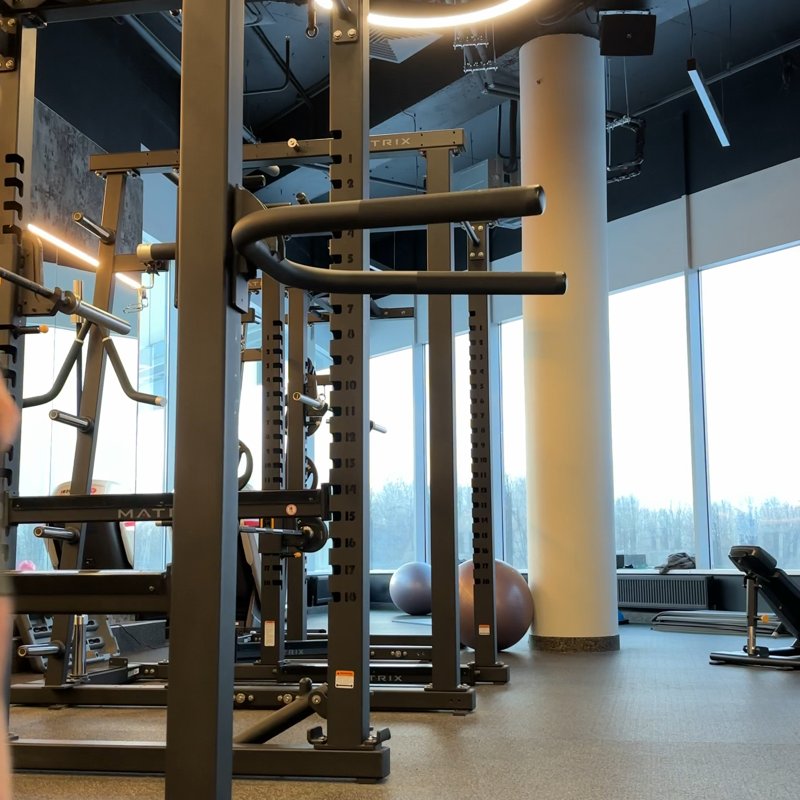
Log in to watch video demonstrations
Login to Watch3 video demonstrations available
Find more video demonstrations in the Gravitus app
Tips from the Community
-

When your elbows are further away from the body this exercise targets chest. When your elbows are closer to the body this targets triceps.
Track your progress with Gravitus
Download Gravitus to log your workouts, track your progress, and join a community of fitness enthusiasts.

Helpful Resources
One Rep Max Calculator
Find your one rep max for any exercise without maximal testing. Essential for developing effective strength training programs.
Calculate 1RMWorkout Programs
Follow structured workout programs created by fitness professionals to maximize your strength and muscle gains.
View Programs